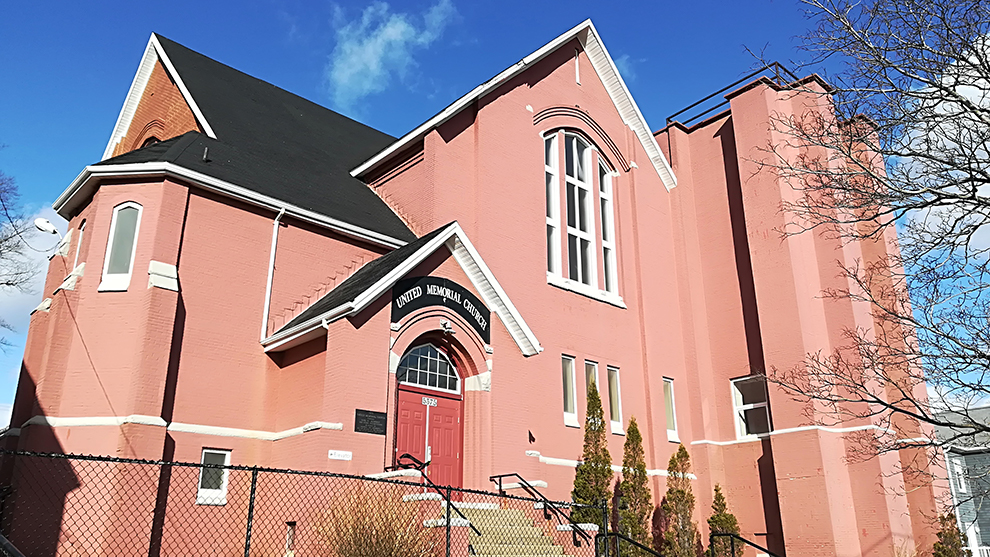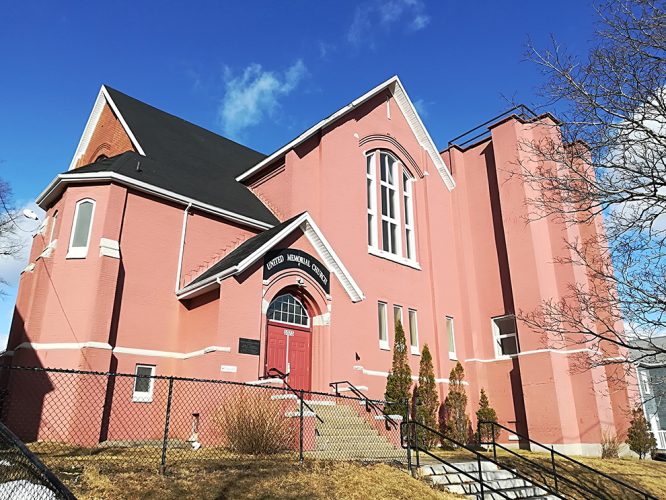Heritage
Halifax church facing demolition recommended for heritage designation
Heritage Advisory Committee approved request for designation for United Memorial Church

caption

caption
The United Memorial Church on Kaye Street is up for heritage designation.A group fighting for the future of their north-end Halifax neighbourhood gained a small victory Wednesday.
A heritage designation request for the former United Memorial Church, filed by Gilles Deveau on behalf of the group, could save the building from demolition. The Heritage Advisory Committee has recommended that council approve the request.
However, the group isn’t just saving the building for historic reasons; they are also doing it to curb development.
Steven Metlege, the owner of the church, has filed an application to amend land-use bylaw. This amendment would allow the church to be demolished and a seven-storey residential building built in its place.
“To tear down the building and increase density to the tune of 68 units on the square footage of the church is completely inconsistent with an R1 zoning, or the established residential neighbourhood that this area is,” Deveau told The Signal on Tuesday.
R-1 zoning is primarily for single detached homes.
Deveau is hoping that the developer will work with the neighbourhood to repurpose the existing structure into something more “scale appropriate.”
Council has not approved any building plans, but has directed municipal staff to continue to work with the owner to bring the plans more in line with the draft Centre Plan.
A permit for demolition was issued on Jan. 17. The owner must now wait for council’s decision on the building’s heritage status before proceeding.
The United Memorial Church, located on Kaye Street, was built in 1921 by famed Halifax architect Andrew Cobb. The church replaced the Kaye Street Methodist Church and the Grove Presbyterian Churches that were destroyed in the Halifax Explosion of 1917. The union of the two congregations happened four years before the founding of the United Church of Canada.
The case for repurposing
While Deveau and the other applicants want the church to be preserved, they understand it will have to be modified in some way.
“We know that for the building to be in place, there will have to be some repurposing. It will not be a church,” said Deveau. “We’re OK with that.”
Andrew Murphy, spokesperson for the Heritage Trust of Nova Scotia, has a few ideas. He believes the church could be converted into a 32-unit residential space.
“Winnipeg has an entire district, called the exchange district, where they took these old warehouses and converted them into residential (spaces). It’s a technology that’s very well known in our country,” he said in an interview on Tuesday.
Murphy said a choice needs to be made when it comes to heritage properties.
“Tourists don’t come to Spring Garden Road to see the latest bank building that’s being constructed. They come to see the old stuff. That’s what makes us different; that’s what makes us unique,” he said.
Even if council accepts the recommendation and grants heritage status, the church could still be demolished.
Should heritage status be granted, the owner could still apply to demolish, significantly alter the building or bring forward plans that make use of the existing structure.
If council rejects the application, the owner could still make major alteration or demolish the structure three years after the application’s date, under section 18(3) of the Nova Scotia Heritage Property Act.


A
AJ Thomas